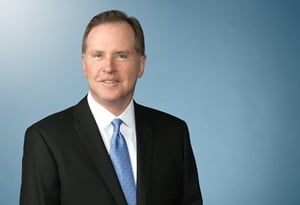FERC Weighs PURPA Changes: What Do Renewable Energy Stakeholders Need to Know?
For a law originally passed in response to the energy crisis of the 1970s, The Public Utility Regulatory Policies Act (PURPA) has received a lot of recent attention from Congress and advocates for both investor-owned utilities (IOUs) and the renewable energy industry. The renewed interest in the law may result in action by the Federal Energy Regulatory Commission (FERC).
Background: Boosting Energy Conservation and Domestic Energy Development
PURPA was passed in 1978 as part of the National Energy Act with the goal of encouraging energy conservation and increasing supply of domestic energy development and renewable resources. While the importance of the law has ebbed and flowed since its initial passage, recent market developments have brought it back into prominence as utilities and regulators seek to stabilize the national electric grid with an increasing number of non-utility producers coming online.
The law created a new class of power producers, referred to as Qualifying Facilities (QFs), that receive special rate and regulatory treatment. QFs include renewable generation utilities—such as hydro, solar, wind and other facilities producing less than 80 megawatts (MW) of power—and cogeneration facilities installed at manufacturing sites, refineries, paper mills and other industrial facilities that utilize excess heat and steam to generate electricity. Historically, the primary QFs were cogeneration operations, but in recent years solar and wind farms have become the predominant class of QFs. Under PURPA, IOUs are required to purchase all excess power produced at QFs. In 2005, Congress modified PURPA to reduce the size requirement of such projects to 20 MW facilities, but the IOUs complain that solar farms are taking advantage of the law by building 20 MW farms one mile apart to skirt the project size requirements.
Today: Political Pressure and FERC Review
The energy market has again transformed over the past decade, and increased incentives to produce additional sources of renewable energy, combined with continued reduction in production prices of utility-scale power, has utilities feeling the pressure that additional sources put on their ability to reliably operate the grids. In a November 2015 letter, Republicans in Congress asked FERC how the grid is affected by additional small producers and whether the one-mile rule has been subject to abuse, leading FERC to call for a technical conference. A subsequent letter from Congressional Democrats in February 2016 attempted to push FERC in the other direction, in favor of no action. In response, FERC Chairman Norman Bay announced the Commission would seek input from both sides in a technical review to learn more about the subject.
On June 29, 2016, FERC heard input from utilities, grid operators, small power producers and cogenerators to determine if the current regime works under contemporary market structures. Utilities spoke of the need to overhaul PURPA due to the unsustainably high prices they are obligated to pay renewables development. Developers insisted that these purchase obligations provide the certainty needed to refund the cost of building these small solar and wind facilities. Additionally, FERC heard testimony regarding small producers "gaming the system" by deliberately staying under the 20 MW threshold at a particular site but building strings of 20 MW installations far enough apart to be considered separate entities—effectively creating utility-scale projects that are not regulated as utilities. The review also considered the role of tax incentives and Renewable Portfolio Standards (RPS).
What's Next?
FERC has five different policy options that it can use to move this issue forward, and it's expected to do something before the end of this year:
- They can officially ask for more information from affected parties without signaling their long-term intentions;
- They can issue a policy statement that signals their intentions to mold the future uses of the provision;
- They can utilize a pending matter—there are 16 matters before the FERC that touch on these issues—as a means to signal what they would like to see occur;
- They can enter into a formal rulemaking to redefine the program by regulation; or
- They can choose to do nothing.
Whatever FERC decides to do, it will have implications on the IOUs, renewable energy producers and advocates, cogeneration facilities such as chemical plants and other manufacturers, and—ultimately—the consumers.


